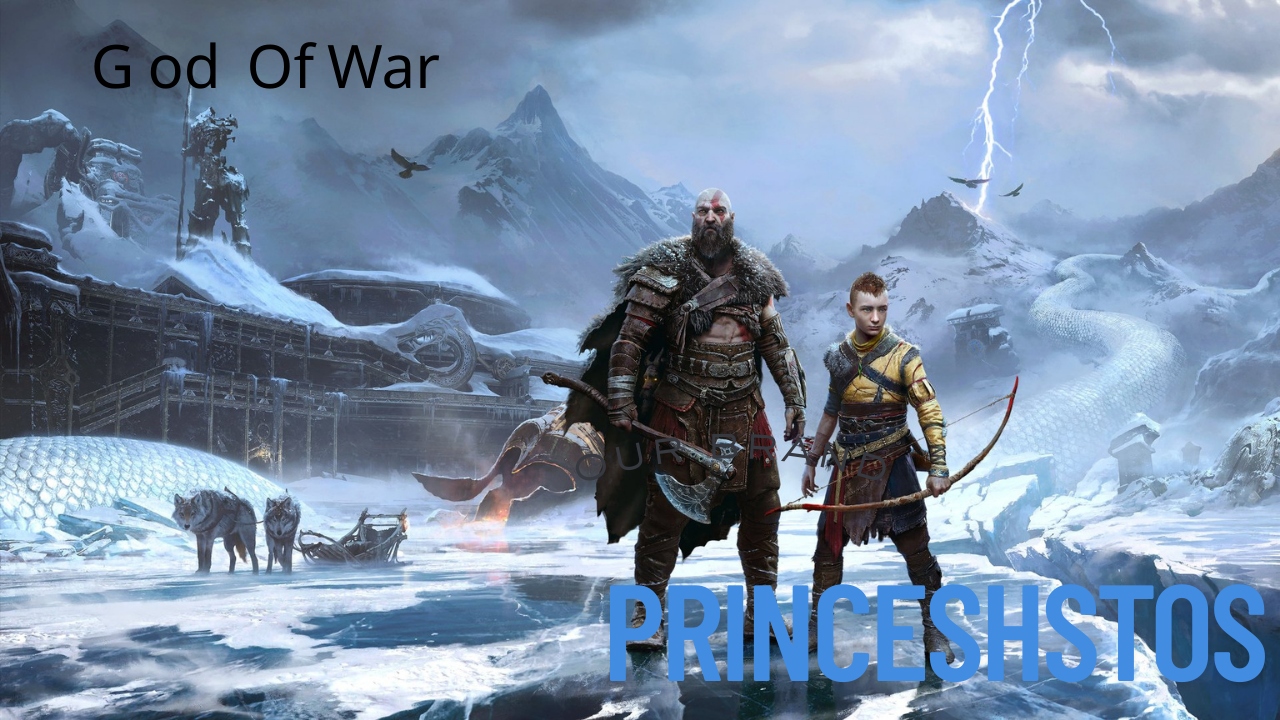God of War Ragnarök: The Thunderous Battle Between Thor and Kratos – A Deep Dive into the Epic Showdown
Few games in recent memory have managed to strike the perfect balance between raw action, mythological storytelling, and emotional depth quite like God of War: Ragnarök. From the moment it was released, players were captivated by the continuation of Kratos and Atreus’ journey through the Nine Realms. However, among the many standout moments in the game, one truly electrified players and etched itself into the pantheon of gaming history: the first clash between Kratos and Thor.
This confrontation isn’t just a boss battle—it’s a collision of legacies, ideologies, and raw divine power. At its core, the Kratos vs Thor fight encapsulates everything God of War has become: myth, brutality, and the struggle to change one’s destiny. In this article, we’re diving deep into every facet of this monumental fight—the narrative buildup, combat mechanics, symbolism, and why it stands as one of the greatest boss fights in gaming history.
The Build-Up: Gods on a Collision Course
From the first moments of God of War: Ragnarök, we know that Thor’s arrival is imminent. The original God of War (2018) ended with a post-credits teaser: a mysterious, towering figure wielding Mjölnir stands at Kratos’ doorstep as thunder rolls in the background. Fans speculated, dissected, and dreamed for years about this moment, and Santa Monica Studio delivered.
Thor is not just a powerful adversary; he’s the son of Odin, the All-Father, and brother of Baldur, who Kratos killed. He’s also a man with his own demons, his own grief, and a brutal legacy as the “Greatest Slayer of Giants.” Unlike the more humorous, heroic version of Thor seen in Marvel adaptations, God of War presents a darker, grimmer portrayal—one of a god weighed down by his deeds and haunted by the expectations of his father.
From the moment he steps onto the screen, Thor commands attention. His towering presence, his gravelly voice (expertly portrayed by Ryan Hurst), and the ominous weight of Mjölnir make it clear: this isn’t just another god. He’s the god of thunder, and he’s here for Kratos.
Round One: The Knock at the Door
Thor’s first encounter with Kratos is chillingly civil. Alongside Odin, he visits Kratos and Atreus at their home under the guise of diplomacy. What follows is a tense conversation filled with veiled threats and unspoken history. But the moment Odin departs and Thor invites Kratos to “have a talk” outside, the illusion shatters.
What begins as a discussion quickly erupts into violence. Thor hurls Kratos across the realms with the force of a storm, initiating one of the most cinematic and memorable boss fights in gaming.
Gameplay Breakdown: The Art of Godly Combat
From a gameplay perspective, the Thor fight is a masterclass in pacing, design, and cinematic integration. It’s a multi-phase boss battle that seamlessly weaves combat, quick-time events, and cutscenes without ever breaking immersion.
Phase One: Shock and Awe
The battle kicks off in a small arena, where Thor immediately establishes his dominance. He’s fast, aggressive, and wields Mjölnir with terrifying efficiency. His attacks crack the ground, send shockwaves, and showcase the sheer difference in power between him and Kratos. The player must be quick to block, parry, and learn his patterns.
This part of the fight is designed to make you feel overpowered. Thor taunts Kratos, mocking his attempts to reform and reigniting his old rage. His dialogue is piercing: “Show me who you really are!” It’s not just about fighting—Thor wants the old Kratos, the Ghost of Sparta, the killer of gods.
Phase Two: Lightning Strikes Twice
As the battle intensifies, the environment changes. Thor knocks Kratos across vast landscapes, crashing through mountains, teleporting between realms, and delivering massive, cinematic blows. This phase emphasizes movement and adaptation. The camera tightens, the music swells, and the stakes rise.
Thor begins to use more thunder-based attacks, with Mjölnir crackling with energy. Players must balance aggression and caution, using Kratos’ Leviathan Axe and Blades of Chaos to full effect. Every successful dodge or counter feels earned, every stumble potentially fatal.
Phase Three: Death and Resurrection
One of the most jaw-dropping moments in the fight comes when Thor seemingly kills Kratos—his heart literally stops. In a moment of visual silence and metaphorical symbolism, the screen fades, only for Thor to revive him with a jolt of electricity.
This is not mercy. It’s a message. Thor doesn’t want to kill Kratos easily—he wants a fight worth remembering. It’s godly pride, warrior’s honor, and psychological warfare rolled into one devastating moment.
This twist reinforces how God of War has evolved as a series. Gone are the days of simply hacking through enemies; these fights are personal, narrative-rich, and character-driven.
Thematic Weight: Legacy, Rage, and Redemption
The Thor fight isn’t just a spectacle of thunder and axe. It’s a confrontation between two broken men shaped by violence and haunted by legacy.
Kratos is trying to change. He’s a father, a protector, and a man who no longer wants to be the god-killer of old. But the world—and gods like Thor—won’t let him forget who he was.
Thor, meanwhile, is a reflection of what Kratos might have become. He is a warrior trapped by his father’s expectations, numbing his pain with mead and brutality. Despite his godlike power, Thor is just as much a victim of his upbringing as Atreus might be if Kratos fails to guide him.
This fight becomes more than just violence—it becomes a symbolic battle for the soul. Thor tries to drag Kratos back into the abyss, while Kratos resists, trying to prove that he can be better, for Atreus’ sake, and his own.
Their dialogue mid-fight is rich with subtext. Thor sneers at Kratos’ attempts to change, calling it cowardice. Kratos, bloodied but unyielding, insists that vengeance and rage are no longer his path.
Cinematic Excellence
Credit must be given to Santa Monica Studio for crafting such a breathtaking visual experience. The fight is cinematic in every sense—dynamic camera angles, real-time transitions, and stunning animation make every punch and block feel impactful.
Bear McCreary’s score underlines the emotional and mythic weight of the battle, blending Norse motifs with pulsing drums and haunting melodies. The music swells at just the right moments, heightening the tension and amplifying the drama.
Aftermath and Impact
While the battle eventually ends in a stalemate, the ramifications are massive. Thor and Kratos both survive, but the encounter leaves them—and the player—changed. It sets the tone for the rest of the game, showing that Ragnarök won’t just be about fighting gods, but confronting who you are.
Thor’s character continues to evolve throughout the game, and this fight is the foundation. It teases a more complex narrative, one where even gods can change—or fall deeper into the paths they’ve carved.
Kratos, meanwhile, emerges reaffirmed in his desire to be better—but also reminded that redemption is not easy, nor is it quick. The world will keep testing him, and he must rise to meet it without becoming the monster he once was.
Final Thoughts: A Fight for the Ages
The Thor vs Kratos fight in God of War: Ragnarök is everything fans hoped it would be—and more. It’s brutal, cinematic, emotionally rich, and mechanically satisfying. It’s not just a fight; it’s a narrative milestone that challenges the player, tests the characters, and sets a new bar for boss battles in gaming.
More than anything, it’s proof that God of War is no longer just about gods and vengeance. It’s about the people underneath the myth—the fathers, sons, and warriors struggling to find meaning in a world shaped by chaos and power.
In a game full of unforgettable moments, this fight stands tall like a mountain in a storm. And like any great myth, it will be told and retold for years to come.




15 رد على “God of War Ragnarök: The Thunderous Battle Between Thor and Kratos – A Deep Dive into the Epic Showdown”
Awesome https://is.gd/tpjNyL
Good https://is.gd/tpjNyL
Very good https://is.gd/tpjNyL
Very good https://shorturl.at/2breu
Awesome https://shorturl.at/2breu
Very good https://shorturl.at/2breu
Awesome https://shorturl.at/2breu
Very good https://shorturl.at/2breu
Very good https://lc.cx/xjXBQT
Awesome https://lc.cx/xjXBQT
Awesome https://is.gd/N1ikS2
Awesome https://is.gd/N1ikS2
Very good https://is.gd/N1ikS2
Very good https://is.gd/N1ikS2
Awesome https://is.gd/N1ikS2